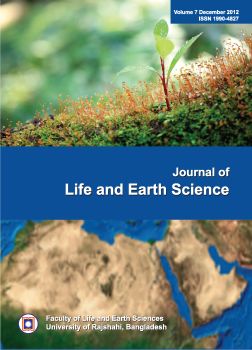Attitude towards Stress of Cancer and Cardiac Patients
DOI:
https://doi.org/10.3329/jles.v7i0.20119Keywords:
Attitude, stress, cancer, cardiac, gender, SESAbstract
The study focused on exploring the attitude towards stress of cancer and cardiac patients as related to gender and SES. The sample of the study comprised of 360 respondents selected purposively. Attitude towards Stress Scale (Rahman, 2010) was used for data collection. The sample was equally divided into three categories-cancer, cardiac and normal on the basis of type of individuals (N=120 for each category).Again they were equally subdivided into male and female on the basis of gender (N=60 for each group).Each category was again equally subdivided into lower middle and upper middle on the basis of SES (N=30 for each group). Results analyzed through ANOVA revealed that the main effects for type of individuals, gender and SES were statistically significant. That is, both cancer and cardiac patients expressed higher stress attitudes as compared to normal individuals, females expressed higher stress attitudes as compared to males and lower middle SES individuals expressed higher stress attitudes as compared to upper middle SES. Again interaction effect of a three-way analysis of variance involving type of individual, gender and SES was statistically significant.
DOI: http://dx.doi.org/10.3329/jles.v7i0.20119
J. Life Earth Sci., Vol. 7: 33-41, 2012
Downloads
201
220
Downloads
Published
How to Cite
Issue
Section
License
It is a condition of publication in the Journal that author(s) assigns copyright to the Faculty of Life and Earth Sciences, University of Rajshahi, whose permission must be obtained to reproduce there from. This would ensure efficient handling of reproduction of articles for third party requests and wide dissemination at large.

